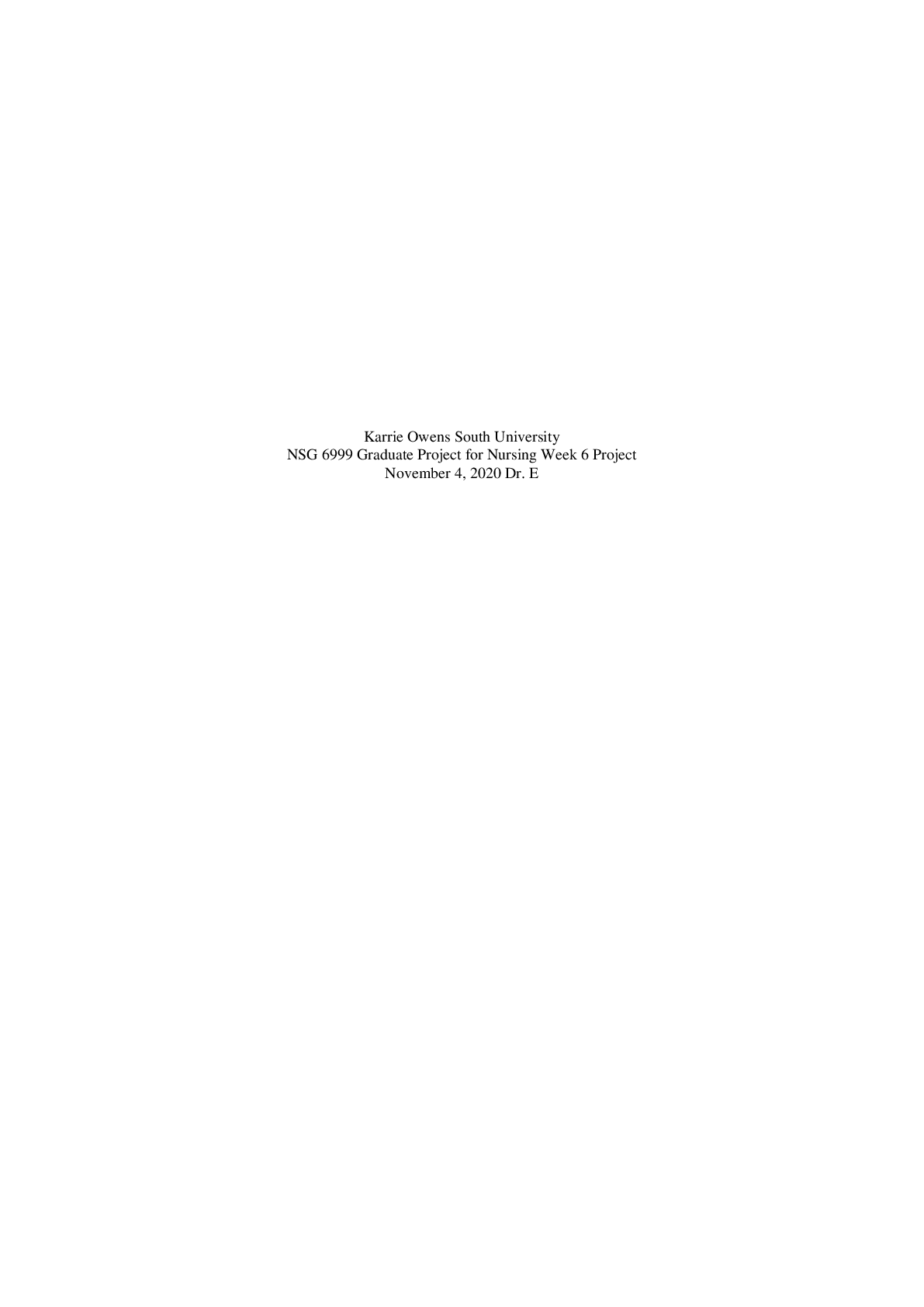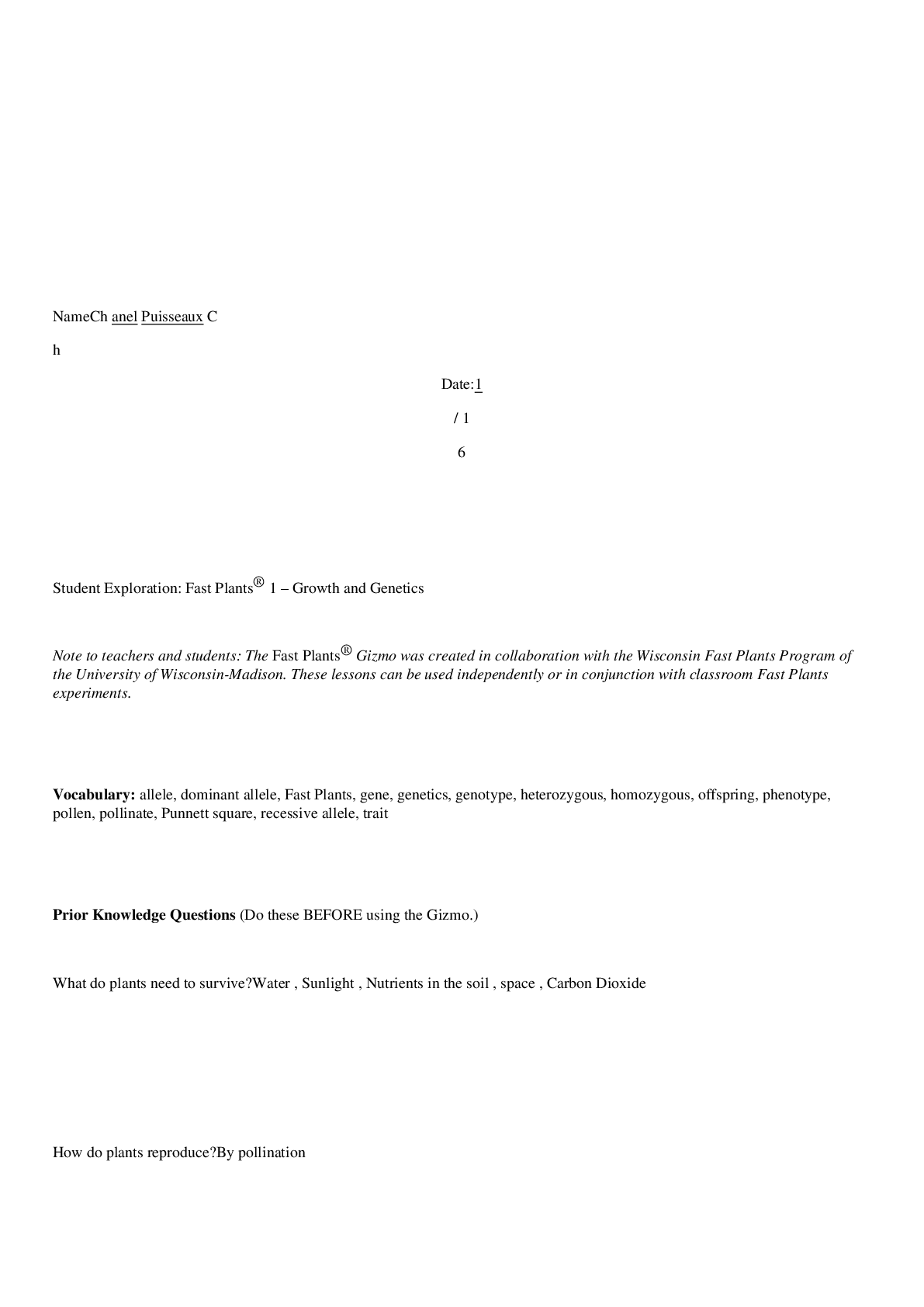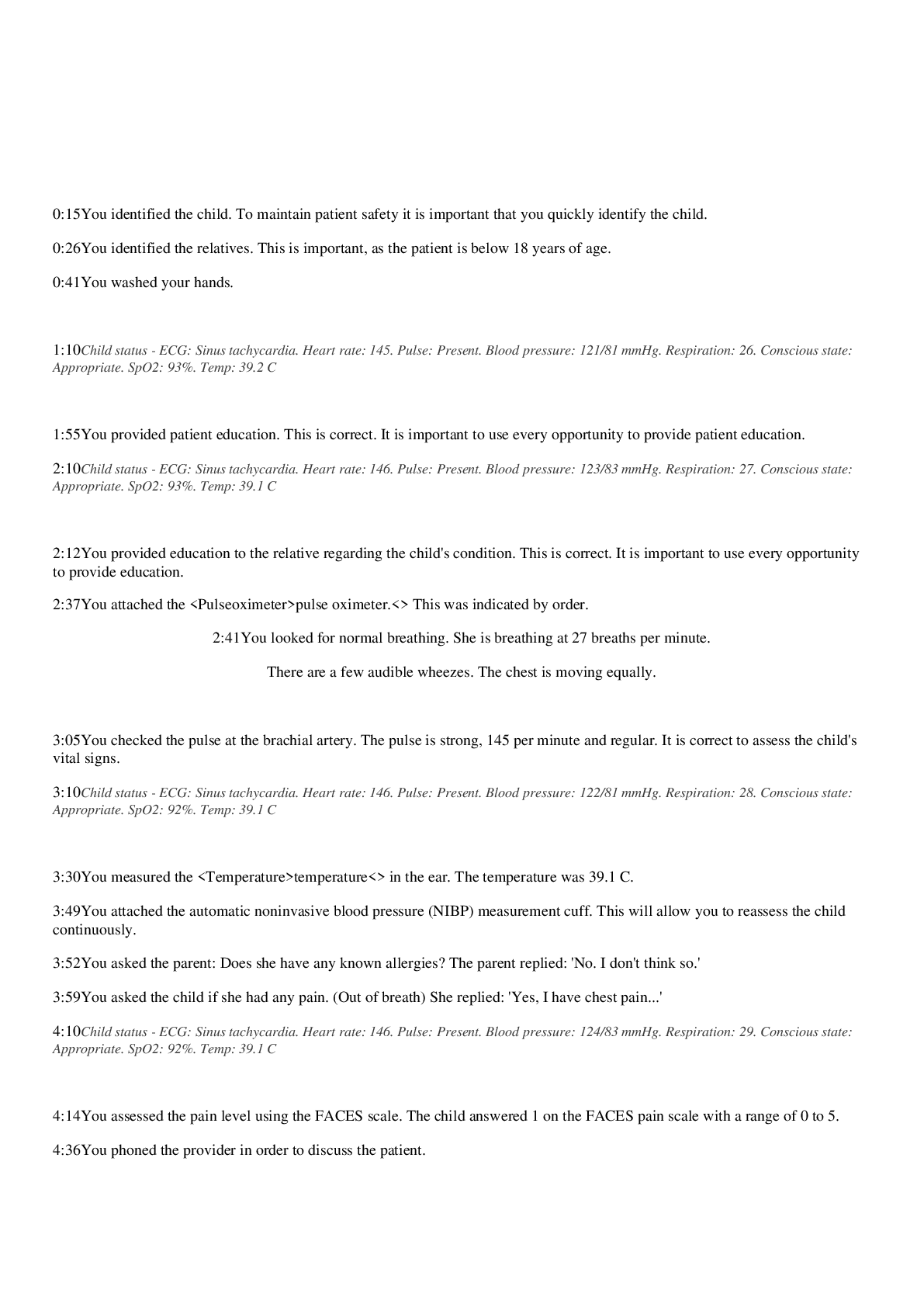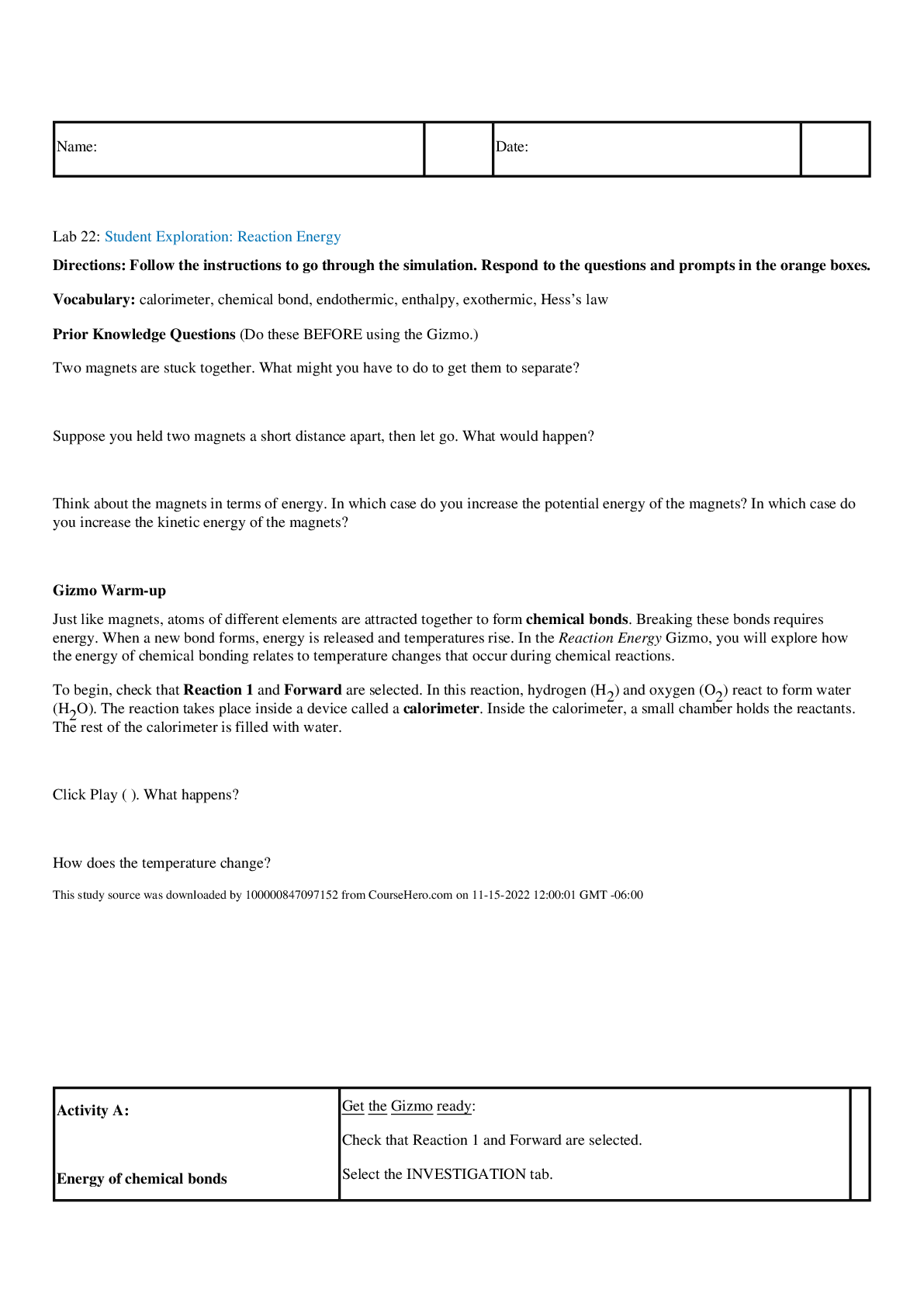Health Care > QUESTIONS & ANSWERS > RespiratoryCare Practice Exam Gary Persing, TMC Q&A + Rationale (All)
RespiratoryCare Practice Exam Gary Persing, TMC Q&A + Rationale
Document Content and Description Below
1) A patient receiving positive expiratory pressure (PEP) therapy through a mouthpiece at 10 cm H2O has minimal secretion production. Course crackles are heard during auscultation. The respiratory the... rapist should recommend which of the following? A. Decrease the PEP to 5 cm H2O. B. Discontinue the treatment and begin percussion and postural drainage. C. Increase the PEP to 15 cm H2O. D. Administer the treatment with a mask instead of the mouthpiece. Correct Answer is C Rationale: PEP therapy is indicated for patients with retained secretions. Positive pressure applied during exhalation aids in the mobilization of secretions. Generally, PEP levels of 10 to 20 cm H2O are used. If the PEP used does not result in the mobilization of secretions, the PEP should be increased. 2) A heated humidifier is delivering 26 mg of H2O/L of gas to an intubated patient. Which of the following statements concerning this situation are true? 1. A humidity deficit exists. 2. The patient's secretions may become thicker. 3. The heater temperature should be decreased. A. 1 only B. 1 and 2 only C. 2 and 3 only D. 1, 2, and 3 Correct Answer is B Rationale: Whenever the amount of H2O being delivered to the patient is less than 44 mg/L, a humidity deficit exists. This decreased H2O delivery can result in thickening of pulmonary secretions, with an increased potential of mucous plugging and atelectasis distal to the plugs. Because cooler air cannot hold as much H2O as warmer air, decreasing the heater temperature increases the humidity deficit. 3) The respiratory therapist is administering acetylcysteine (Mucomyst) via a handheld nebulizer to a patient who suddenly becomes short of breath. Which of the following is the most appropriate recommendation at this time? A. Have the patient take deeper breaths. B. Add racemic epinephrine to the nebulizer. C. Stop the treatment and administer albuterol. D. Stop the treatment and administer cromolyn sodium. Correct Answer is C Rationale: A common complication of acetylcysteine administration is bronchospasm. When respiratory difficulties occur during a Mucomyst treatment, suspect bronchospasm and administer a bronchodilating agent. 4) An intubated patient's secretions tend to become thicker and harder to mobilize in which of the following conditions? 1. Absolute humidity of 18 mg H2O/L of gas 2. 48 mg of H2O/L of gas 3. Relative humidity of 100% at 25° C 4. A H2O vapor pressure of 47 mm Hg A. 1 and 2 only B. 1 and 3 only C. 2 and 3 only D. 2 and 4 only Correct Answer is B Rationale: For delivery of 100% saturated gas at body temperature (100% body humidity) , the gas must be holding 44 mg of H2O/L of gas to have an H2O vapor pressure of 47 mm Hg. Thus, choices 1 and 3 result in a humidity deficit. Although choice 3 indicates a relative humidity of 100%, it is at only 25° C, not at body temperature (37° C), so inadequate H2O is being delivered and the body has to make up the deficit. This causes the airway to dry out and make secretions thicker. 5) Which of the following is the most appropriate ventilator VT setting for a female patient who is 5 ft, 5 in tall and weighs 85 kg (187 lb) ? A. 450 mL B. 600 mL C. 800 mL D. 900 mL Correct Answer is A Rationale: The ventilator VT should be set at 8 to 12 mL/kg of ideal body weight. Calculation of ideal body weight is as shown: Male: 106 + (6 × [ (height in inches - 60]) Female: 105 + (5 × [height in inches - 60]) In this problem, the woman is 65 inches tall. 105 + (5 × [65 - 60]) = 105 + 25 = 130 lb In other words, you add 5 lb for every inch over 5 ft to a base of 105 lb to obtain the ideal body weight. To change pounds to kilograms, divide by 2.2: 130/2.2 = 59 kg Using 6 to 8 mL/kg of ideal body weight, the most appropriate volume is 450 mL. 6) During O2 rounds, the respiratory therapist notices a nebulizer delivering very little mist to the patient's aerosol mask. Which of the following could cause this problem? 1. Inadequate flow from the flowmeter. 2. A plugged capillary tube. 3. Excessive H2O in the aerosol tubing. A. 1 only B. 1 and 2 only C. 2 and 3 only D. 1, 2, and 3 Correct Answer is D Rationale: Inadequate flow to the nebulizer results in an overall decrease in total flow and less mist output. If the capillary tube is plugged, H2O is prevented from being drawn up the tube for aerosolization to occur, with less resulting mist output. Finally, H2O build-up in the aerosol tubing results in an increased resistance to gas flow; therefore, gas flow decreases, along with total mist output. This usually occurs on heated nebulizers because of the temperature change from the outlet of the nebulizer through the cooler tubing, which results in H2O condensation in the tubing. 7) Chest film results reveal that a patient has consolidation in the left upper lobe. For selective suctioning of the left mainstem bronchus, the respiratory therapist should recommend which of the following? A. Have the patient turn the head to the right during suctioning. B. Use a Yankauer suction device. C. Use a whistle-tip suction catheter. D. Use a coude-tip suction catheter. Correct Answer is D Rationale: A coude-tip catheter is a catheter in which the tip is angled to the left for selective suctioning of the left mainstem bronchus. 8) A patient receiving volume-controlled ventilation has a PaO2 of 54 mm Hg on a PEEP of 8 cm H2O and an FIO2 of 0.50. After increasing the PEEP to 12 cm H2O, the cardiac output decreases from 5.2 to 4.0 L/min. The most appropriate action is to do which if the following? A. Discontinue PEEP and increase the FIO2 to 0.70. B. Increase PEEP to 15 cm H2O. C. Decrease PEEP to 8 cm H2O and increase the FIO2 to 0.60. D. Maintain the current settings and measure cardiac output in 1 hour. Correct Answer is C Rationale: Because increasing the PEEP level from 8 to 12 cm H2O resulted in a reduction in cardiac output, the PEEP should be returned to 8 cm H2O and the FIO2 should be increased to 0.60. The general rule of thumb for the examination is to increase the FIO2 to 0.60 before increasing PEEP. 9) This set of ABG results was obtained on a patient in the ICU on a 2-L/min nasal cannula: pH 7.22 PaCO2 27 mm Hg PaO2 78 mm Hg HCO3- 12 mEq/L BE – 13 mEq/L The correct interpretation of these ABG results is which of the following? A. Partially compensated metabolic acidosis B. Uncompensated metabolic acidosis C. Fully compensated respiratory acidosis D. Uncompensated respiratory alkalosis Correct Answer is A Rationale: The acid pH is the direct result of the decreased HCO3-level. The patient is hyperventilating to decrease the PaCO2 so that the pH returns to normal levels. Because the pH is still low, it is considered a partially compensated metabolic acidosis. [Show More]
Last updated: 2 years ago
Preview 1 out of 83 pages
 Respiratory Care Practice Exam Gary Persing, TMC Questions And Answers Plus Rationale.png)
Buy this document to get the full access instantly
Instant Download Access after purchase
Buy NowInstant download
We Accept:

Reviews( 0 )
$15.00
Can't find what you want? Try our AI powered Search
Document information
Connected school, study & course
About the document
Uploaded On
Mar 12, 2023
Number of pages
83
Written in
Additional information
This document has been written for:
Uploaded
Mar 12, 2023
Downloads
0
Views
78




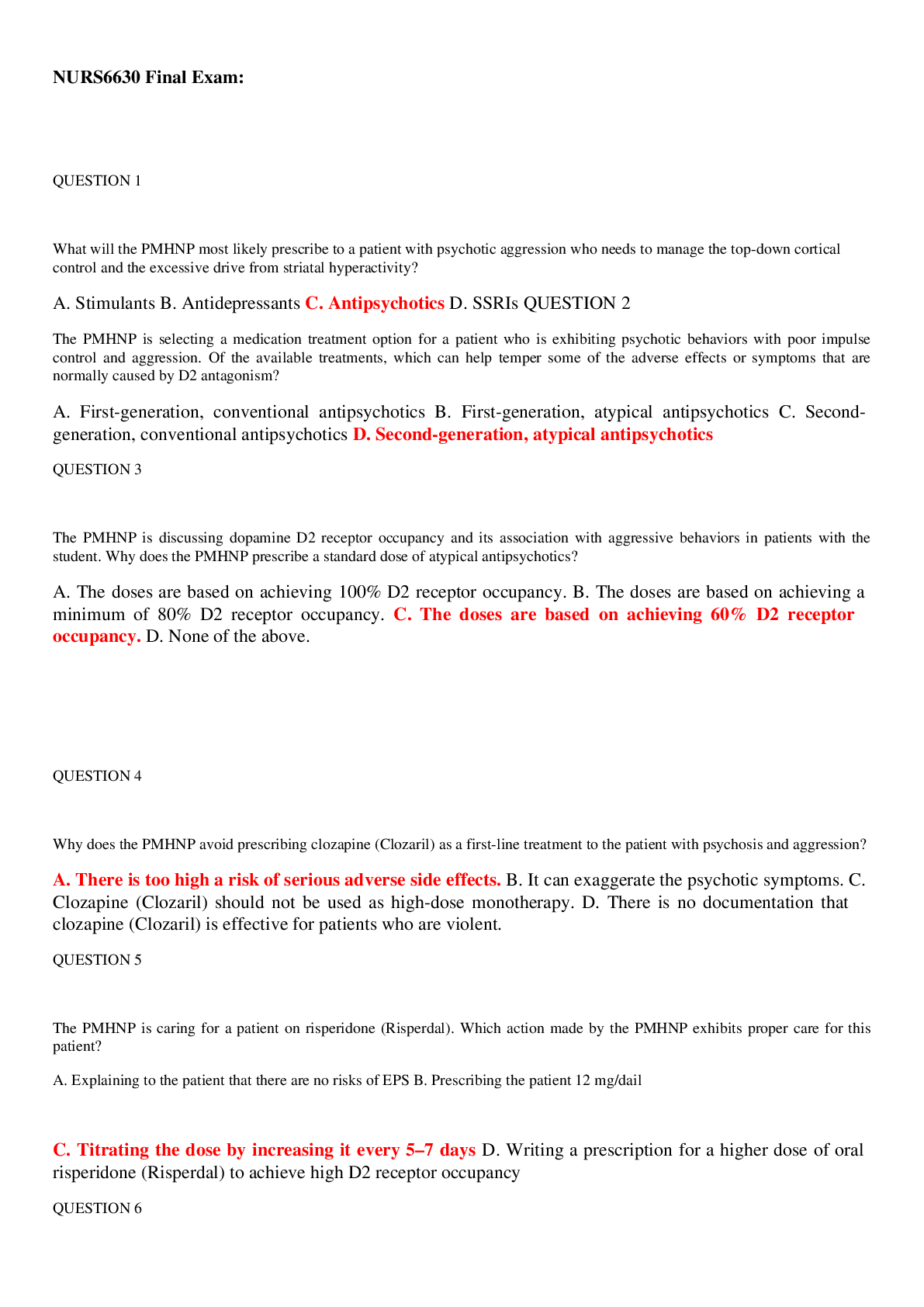
 TEST with Answers.png)

